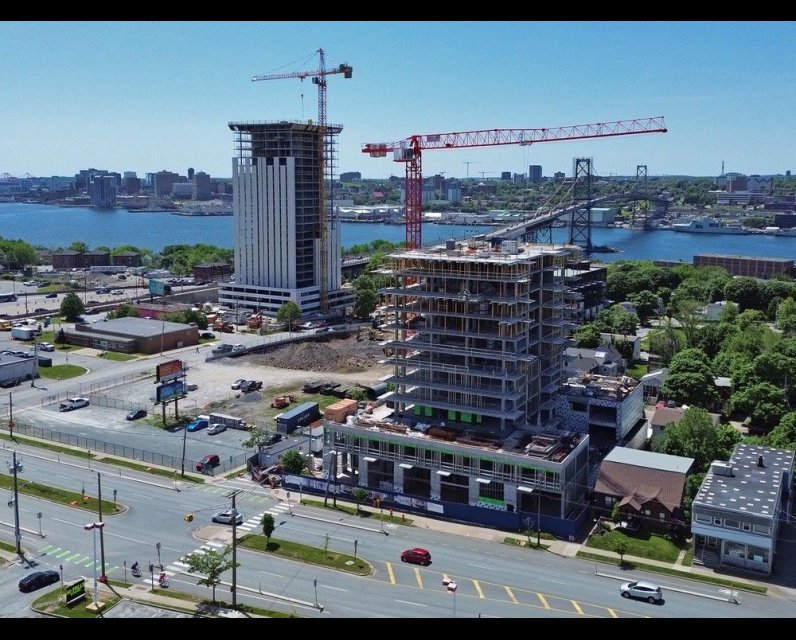Source Feed: National Post
Author: Chris Lambie
Publication Date: July 18, 2025 - 12:15
Immigration fuels Atlantic Canadian 'economic renaissance,' authors argue
July 18, 2025

Canada is struggling with the effects of an unprecedented immigration boom: Housing shortages, youth unemployment, overtaxed social programs and more.
But in Atlantic Canada, those irritants are largely overshadowed by a much different story: the transformation of moribund and stagnant economies that made the region Canada’s poor cousin.
The authors of a new book detail the dramatic improvements newcomers are bringing to the East Coast — and argue this is no time to swerve. They argue only for a more strategic immigration policy, one that reflects the region’s economic needs.
In Toward Prosperity, The Transformation of Atlantic Canada’s Economy, former pollster Don Mills and economist David Campbell highlight how increasing immigration in the past five years has boosted the economy of a stagnant region with the oldest population in the country.
“Provincial governments across Atlantic Canada have finally understood the implications for an aging population and the need for population growth: all four provinces in the region now have population growth strategies, with immigration as a core focus of those strategies,” they write.
Nova Scotia seeks to double its population to two million by 2060, and New Brunswick, where the population was pegged at 854,355 last year, is aiming for one million people within the decade, according to their 2025 book published by Halifax-based Nimbus.
“Most of the region’s largest municipalities now have their own population growth strategies as well,” Mills and Campbell write. “All these population strategies acknowledge the critical role of immigration to drive labour force and population growth.”
Last year, after three years of especially rapid growth in Canada’s immigration population, the Liberals under Justin Trudeau announced they were reducing the number of permanent residents admitted to the country by 21 per cent. Earlier this year, Prime Minister Mark Carney pledged to cap the total number of temporary workers and international students to less than five per cent of Canada’s population within two years.
Conservative Leader Pierre Poilievre this month called for “very hard caps” on the number of newcomers allowed into the country. He told reporters the country has struggled to integrate newcomers and he wants to see more people leaving than coming in “while we catch up.”
“We have millions of people whose permits will expire over the next couple of years, and many of them will leave,” Poilievre said. “We need more people leaving than coming for the next couple years.”
In 2022, the Canadian population rose by over a million people for the first time in history — and then kept growing faster. According to Statistics Canada, the population reached 40,769,890 on Jan. 1, 2024. That was an increase of 1,271,872 people in a single year — a 3.2 per cent jump, marking the highest annual population growth rate in Canada since 1957.
In an interview, Mills said Atlantic Canada needs smarter and targeted immigration.
“I believe in growth under control,” Mills said. “It got a little out of hand under the Trudeau Liberals. They opened the gates too quickly and it really hurt the housing market and put strains on our health-care and education systems for sure.”
Prince Edward Island was the first Atlantic province to boost immigration levels, he said. The littlest province has been among the country’s leaders in economic growth since. But the island’s population growth rate peaked at three per cent in 2023 — too much, too fast, Mills says.
“We argue in the book for growth under control — somewhere between one and 1.5 per cent is something that we can manage. We still have an ageing population in Atlantic Canada; we need people to fill the jobs of the large group of Baby Boomers who are retiring from the workforce and there’s simply not enough people behind to fill the jobs that we already have. Not just what we have, but what we need to further grow the economy.”
Mills sees the current immigration rethink as a wise thing, as Ottawa figures out the right number of newcomers. It would be a mistake though, both he and Campbell argue, if the Carney government didn’t listen to individual provinces about their immigration needs, including on international student numbers.
“We’ve had really great immigration into places like Miramichi (N.B.), into places like Summerside (P.E.I.), and even in places like Yarmouth (N.S.) and I worry that’s all going to be lost if they keep clamping down on these numbers,” Campbell said.
“Cutting workforce, in our opinion, is like cutting capital. You need three things to have a strong economy. You need capital, you need people, and you need ideas. And if you don’t have one of those three, you’re going to be in trouble.”
Mills uses his own business as an example: When he sold his polling firm, now known as Narrative Research, in late 2018, Mills, along with his son and brother, acquired Cabco, an infrastructure cabling business. Since the purchase in the spring of 2019, the company has grown from 40 to 100 employees.
“We’re continuously recruiting for people,” he said. “It’s hard to find skilled people.”
The company turned to immigrants to help fill the gap. “They’re great workers,” Mills said. “They have a certain ambition that sometimes seems lacking in native-born Canadians.”
In the early 2000s, as young, educated and ambitious immigrants flocked to other parts of Canada, Atlantic Canada had a workforce problem, which left businesses reluctant to invest in the region. “They were not sure there was going to be enough workers,” Campbell said.
In their book, the authors describe Atlantic Canada as being “in the early stage of an economic renaissance” fueled by immigration.
“One of the main reasons why we’re optimistic is because we’ve seen … record levels of population growth across the region, even in Newfoundland and Labrador now, and we feel that will be the impetus for the rest of what needs to happen, such as natural resources development,” Campbell said.
If the region could maintain a “modest level of population growth through immigration,” its future would be “fairly bright,” Campbell said.
The authors point again to P.E.I. The province was able to leverage a greater share of the federal immigration allotment to develop its biosciences and aerospace sectors.
Mills points to the island’s BioAlliance, a private sector-led not-for-profit organization dedicated to building the bioscience industry in P.E.I. that just celebrated its 20th anniversary. “Over that period of time they’ve grown it to … 60 companies and the last time I looked their annual revenues were exceeding $600 million — mostly export dollars, which are really valuable.”
As many as 3,000 people are employed in the cluster, Mills said, equating it to auto manufacturing in Ontario.
The authors make a series of other recommendations to maintain East Coast economic momentum, including “becoming a green energy superpower” by setting up offshore wind power platforms off places like Sable Island, and developing small modular nuclear reactors. Nova Scotia’s Progressive Conservative government has introduced legislation allowing the province’s power utility to own a nuclear plant.
Campbell and Mills also push for measures easing natural resource development, which could help Atlantic Canada move away from its dependence on equalization payments.
“If you really want to eliminate or significantly reduce transfer payments you’ve got to develop your natural resources, including natural gas, and if you have it, oil,” Campbell said. “Because the reality is, if you look at the provinces in Canada that are the strongest, they are the provinces that have oil and gas.”
A Fraser Institute survey last year of senior mining executives found that, in terms of government policy, Nova Scotia was “the least-attractive province, ranking 36th out of 86 jurisdictions, with only the Northwest Territories and Nunavut performing worse in Canada.”
“Miners are skittish because every time somebody wants to do a mine, the pitchforks come out,” Campbell said. “People are really, really nervous about mining, oil and gas, and aquaculture — anything that might have any kind of an impact on the environment. And we’ve got to find a way to get people beyond that and accept the fact that you’ve got to develop your natural resources. You have to have high environmental standards, but if they can do it in Saskatchewan, if they can do it in B.C., if they can do it in Alberta, we have to be able to do it down here.”
The authors also argue the region needs to “become more tax competitive” by lowering personal income tax rates and ensuring corporate taxes are competitive.
A recent Fraser Institute study indicates that “Nova Scotia (at 21 per cent) and Newfoundland & Labrador (at 21.8 per cent) have the highest top marginal provincial personal income tax rates in Canada. New Brunswick (at 19.5 per cent) and Prince Edward Island (at 19 per cent) are also higher than most other provinces.”
Growing the population with new immigrants adds more taxpayers, Mills said.
“This should be an opportunity to bring our taxes in line with other provinces in the country,” Mills said. “But the biggest problem that we still have is governments continue to spend way over what they bring in. That is a systemic problem. Until we get that under control, it’s going to be very difficult to get our taxes under control.”
This is the latest in a National Post series on How Canada Wins. Read earlier instalments here.
Our website is the place for the latest breaking news, exclusive scoops, longreads and provocative commentary. Please bookmark nationalpost.com and sign up for our daily newsletter, Posted, here.
An Ottawa-based organization is urging the federal government to allocate millions of dollars in Budget 2025 to address gaps and misinformation in women's health, saying the money will advance women's health care across the country. Read More
July 20, 2025 - 17:37 | Paula Tran | Ottawa Citizen
Police north of Montreal say a vehicle found in the Mille-Îles River on Sunday could be linked to the case of a Laval man who went missing in 1988.Deux-Montagnes police say they are looking into the discovery, which was reported to police by a diving group known as Exploring With a Mission.
July 20, 2025 - 17:37 | Morgan Lowrie | The Globe and Mail
Mexico's Pato O'Ward finally won the Ontario Honda Dealers Indy Toronto on Sunday, giving the the seven-year veteran his first victory in Canada.
July 20, 2025 - 17:31 | Ashleigh Stewart | Global News - Canada



Comments
Be the first to comment